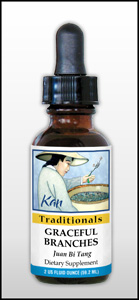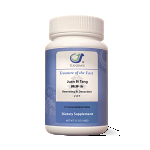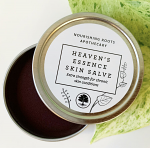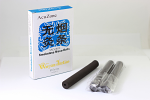Graceful Branches, 2 oz

Graceful Branches, 2 oz
| SKU | KT123A-2 | |
| Brand | Kan Traditionals | |
| Unit Size | 2 | |
| Potency | 7:1 | |
| Contraindications | Should not be used in cases presenting with Heat. Use with caution during pregnancy. | |
| Chinese Symptomology | Wind, Dampness and Cold invasion, local obstruction of Qi in joints | |
| Western Symptomology | Generalized sensation of heaviness; weakness, tenderness, stiffness, and pain in joints | |
| Actions | Tonifies Qi, activates and nourishes Blood, dispels Wind and resolves Damp, tonifies and harmonizes the Wei and Ying Qi | |
| Pattern | Qi Deficiency, Wind Cold Damp Painful Obstruction (Bi Syndrome) | |
| Tongue | Normal, or pale with a white coat; purple in case of a chronic condition | |
| Pulse | Moderate or slow and possibly slippery; pain can sometimes increase pulse rate | |
| Chinese name | Juan Bi Tang | |
| English name | Graceful Branches, 2 oz | |
| Description | In the practice of acupuncture we often see patients who, close to the age of forty, suffer from wrist difficulties (such as Carpal Tunnel Syndrome) and many others who, around the age of fifty, experience "frozen shoulder." The common modern lifestyle of sedentary jobs and poor diet leads to Qi deficiency and Blood stasis, causing limbs and joints to lose their flexibility. Historically, Chinese medical texts refer to a physical phenomenon called "Forty-year-old wrists and fifty-year-old shoulders." Graceful Branches addresses this phenomenon, as well as generalized limited joint mobility, or muscular pain and spasm in the neck/shoulders, joints, and limbs. The delicate balance between Protective (Wei) Qi and Nutritive (Ying) Qi is also pivotal in maintaining suppleness and the ability to withstand exposure to the elements.*(Kan Herb Company) |
|
| Ingredients | Qiang huo (Notopterygium root and rhizome); Jiang huang (Tumeric rhizome); Dang gui shen (Dong quai root); Chi shao (Chinese red peony root); Huang qi (Astragalus root); Fang feng (Siler root); Gan cao (Chinese licorice root); Hong zao (Red jujube fruit); Gan Jiang (Dried ginger rhizome) |
|






